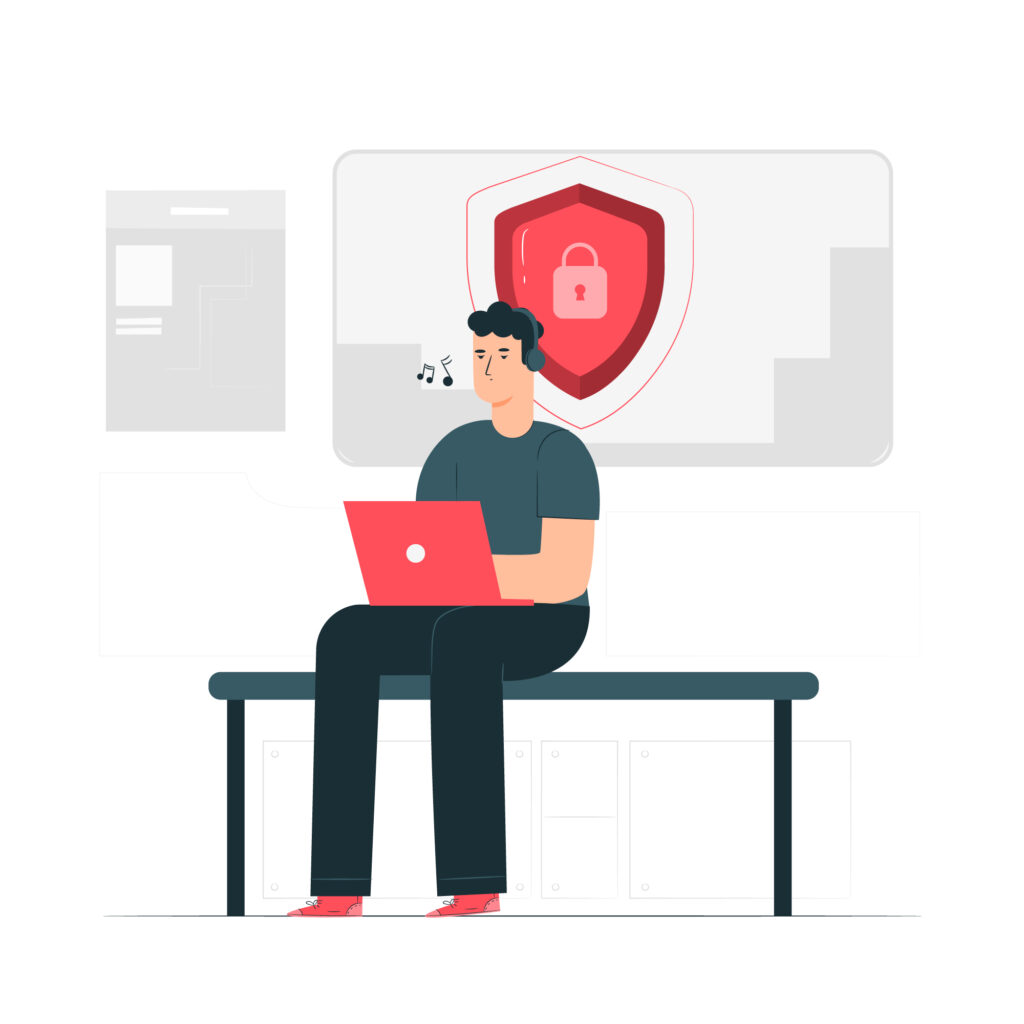 By: John Abhilash / September 18, 2024
By: John Abhilash / September 18, 2024
In the rapidly evolving cybersecurity landscape, sophisticated threat detection and response capabilities are crucial for protecting digital assets against advanced persistent threats (APTs), zero-day exploits, and other complex cyber attacks. This technical deep dive explores cutting-edge threat detection and response methodologies, focusing on the technologies and techniques employed by security operations centers (SOCs) to defend against modern cyber threats.
Effective threat detection and response follows a cyclical process:
Data Collection
Threat Detection
Triage and Analysis
Incident Response
Post-Incident Review and Improvement
Let’s examine each stage in detail, exploring the technical aspects and tools involved.
1.Data Collection
Comprehensive data collection forms the foundation of robust threat detection and response. Key data sources include:
Network Traffic: NetFlow, IPFIX, sFlow
System Logs: Syslog, Windows Event Logs
Application Logs: Web server logs, database logs
Endpoint Telemetry: Process creation, file system changes, registry modifications
Cloud Infrastructure Logs: AWS CloudTrail, Azure Monitor, Google Cloud Logging
Technical Considerations:
Implement log forwarding using protocols like Syslog (RFC 5424) for centralized collection
Utilize log shipping agents (e.g., Filebeat, Fluentd) for efficient data transfer
Deploy network TAPs and packet brokers for full packet capture and analysis
Implement API-based log collection for cloud services
2.Threat Detection
Modern threat detection employs a multi-layered approach, combining various detection methodologies:
a) Signature-based Detection:
Utilizes Intrusion Detection Systems (IDS) like Snort or Suricata
Relies on regularly updated threat intelligence feeds (e.g., MISP, AlienVault OTX)
Implements YARA rules for malware detection
b) Behavioral Analytics:
Leverages User and Entity Behavior Analytics (UEBA) to establish baselines
Employs machine learning algorithms (e.g., isolation forests, clustering) to detect anomalies
Utilizes time series analysis for identifying unusual patterns in network traffic
c) Heuristic Analysis:
Implements sandboxing technologies (e.g., Cuckoo Sandbox) for dynamic malware analysis
Utilizes fuzzy hashing algorithms (e.g., ssdeep) for identifying similar malware variants
Employs static code analysis tools to detect potentially malicious scripts or executables
d) Threat Hunting:
Utilizes hypothesis-driven investigations based on the MITRE ATT&CK framework
Implements advanced query languages (e.g., Kusto Query Language for Azure Sentinel, Splunk Processing Language) for data exploration
Leverages visualization tools (e.g., Kibana, Grafana) for pattern recognition
Technical Implementation:
Deploy a Next-Generation Firewall (NGFW) with integrated IPS capabilities
Implement a Security Information and Event Management (SIEM) system (e.g., Splunk, ELK Stack) for log aggregation and correlation
Utilize EDR solutions (e.g., CrowdStrike Falcon, SentinelOne) for endpoint monitoring and threat detection
Implement Network Traffic Analysis (NTA) tools for real-time traffic inspection and anomaly detection
3.Triage and Analysis
Once potential threats are detected, rapid triage and in-depth analysis are crucial:
a) Automated Triage:
Implement SOAR (Security Orchestration, Automation, and Response) platforms for initial alert enrichment and prioritization
Utilize threat scoring algorithms based on factors like asset criticality, threat intelligence, and alert fidelity
Employ machine learning-based alert clustering to group related incidents
b) Threat Intelligence Integration:
Implement STIX/TAXII (Structured Threat Information eXpression/Trusted Automated eXchange of Indicator Information) for standardized threat intelligence sharing
Utilize threat intelligence platforms (e.g., ThreatConnect, Recorded Future) for context enrichment
Implement automated indicator of compromise (IoC) matching against collected data
c) Forensic Analysis:
Employ memory forensics tools (e.g., Volatility) for analyzing live systems
Utilize disk forensics tools (e.g., Autopsy, FTK) for in-depth artifact analysis
Implement network forensics tools (e.g., Wireshark, NetworkMiner) for packet-level investigation
Technical Considerations:
Develop custom playbooks for automated triage and initial response actions
Implement a threat intelligence management platform for centralized IoC management and correlation
Utilize Jupyter notebooks for collaborative, reproducible forensic analysis
4.Incident Response
Effective incident response requires a combination of automated and manual processes:
a) Containment:
Implement automated network segmentation using Software-Defined Networking (SDN) technologies
Utilize endpoint isolation capabilities in EDR solutions
Employ Just-in-Time (JIT) access management for critical systems
b) Eradication:
Implement automated malware removal using EDR capabilities
Utilize configuration management tools (e.g., Ansible, Puppet) for rapid system hardening
Employ Indicators of Compromise (IoC) sweeps across the environment to identify and remove persistence mechanisms
c) Recovery:
Implement automated system restore procedures using golden images or configuration baselines
Utilize Disaster Recovery as a Service (DRaaS) solutions for critical systems
Employ chaos engineering principles to test and improve recovery processes
Technical Implementation:
Develop and maintain an up-to-date incident response playbook with detailed technical procedures
Implement a dedicated out-of-band management network for secure access during incidents
Utilize digital forensics and incident response (DFIR) toolkits (e.g., SANS SIFT Workstation) for standardized investigation processes
5.Post-Incident Review and Improvement
Continuous improvement is essential for maintaining effective threat detection and response capabilities:
a) Metrics and KPIs:
Track Mean Time to Detect (MTTD) and Mean Time to Respond (MTTR)
Measure false positive rates and alert fidelity
Monitor coverage of the MITRE ATT&CK framework
b) Threat Modeling:
Employ attack simulation tools (e.g., Atomic Red Team, MITRE CALDERA) for proactive testing
Utilize breach and attack simulation (BAS) platforms for continuous security control validation
Implement threat modeling methodologies (e.g., STRIDE, PASTA) for systematic risk assessment
c) Machine Learning Model Improvement:
Implement a feedback loop for continuous model training using validated incidents
Utilize techniques like active learning to improve model accuracy over time
Employ model explainability techniques (e.g., SHAP values) to understand and refine detection logic
Technical Considerations:
Implement a dedicated threat intelligence platform for capturing and sharing lessons learned
Utilize version control systems (e.g., Git) for tracking changes to detection rules and response playbooks
Implement a continuous integration/continuous deployment (CI/CD) pipeline for automated rule testing and deployment
Advanced Threat Detection and Response Techniques
Deception Technology:
Deploy honeypots and honeyfiles to detect lateral movement and data exfiltration attempts
Implement DNS sinkholing to redirect malicious traffic for analysis
Utilize beacon analysis to detect command and control (C2) communications
Network Traffic Analysis (NTA):
Employ JA3 fingerprinting for TLS-based threat detection
Utilize DNS traffic analysis for detecting domain generation algorithms (DGAs)
Implement RITA (Real Intelligence Threat Analytics) for detecting beaconing and other suspicious network patterns
Fileless Malware Detection:
Monitor for suspicious PowerShell and WMI activity
Implement memory-based scanning techniques
Utilize behavior-based detection for identifying malicious scripts and in-memory payloads
Advanced Persistent Threat (APT) Detection:
Implement data exfiltration detection using traffic analysis and DLP technologies
Utilize user behavior analytics to identify account takeover and privilege escalation
Employ long-term data retention and analysis for detecting slow-moving threats
Cloud-Native Threat Detection:
Implement cloud security posture management (CSPM) tools for continuous compliance and misconfiguration detection
Utilize cloud-native SIEM solutions (e.g., Azure Sentinel, AWS Security Hub) for unified visibility across hybrid environments
Employ serverless functions for real-time log analysis and automated response in cloud environments
Conclusion
Effective threat detection and response requires a sophisticated blend of advanced technologies, well-defined processes, and continuous improvement. By implementing these technical approaches and staying abreast of emerging threats and detection techniques, organizations can significantly enhance their ability to detect, respond to, and mitigate complex cyber threats in real-time.
Check Out Other Resources : Maximize Security with Top Endpoint Detection and Response Solutions!







Leave a Comment